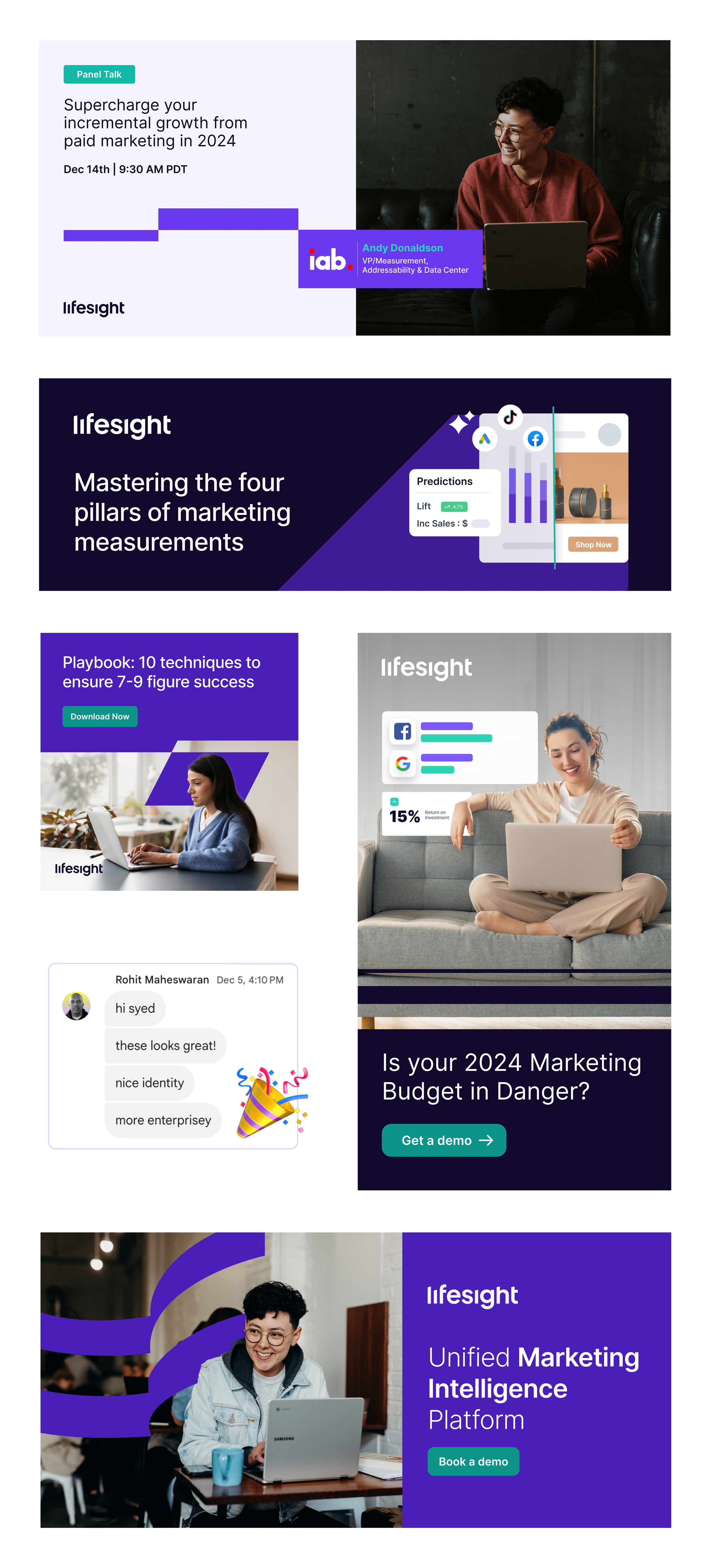My Role
Visual identity
Art Direction
Problem
I observed a significant expansion in our range of marketing materials, encompassing whitepapers, product sheets, social media content, email designs, product screen visuals, and various ad creatives tailored for different platforms, along with one-pagers, pop-ups, and more. Our design system began to falter in its ability to unify these diverse creatives under a singular brand identity, especially with looming deadlines. To keep pace, we accelerated our workflow and even brought in an additional team member. However, this approach proved insufficient. Despite having established guidelines for colors, fonts, and layout styles, our designs somehow failed to convey a cohesive brand image. This inconsistency was perplexing and indicated a deeper issue within our visual strategy.
Solution
I conducted an in-depth analysis and realized that the patterns I had initially established for Lifesight 3.0's visual identity were somehow inadequate or missing a key element. To address this, I revisited the foundational aspects of our work, paying close attention to our core product features. Based on these insights, I decided to develop a new pattern that would more accurately represent these essential features. Additionally, to enhance visual coherence and simplicity, I made a strategic decision to streamline our color palette, reducing it from four colors to just two.
Why this Shapes?
Memorability - A unique and well-designed pattern can make a brand more memorable to consumers. It’s a subtle way of reinforcing brand identity without the overt use of logos or brand names.
Versatility - Good brand patterns are versatile and scalable. They should work well in different contexts and sizes, from large banners to small digital icons.
Emotional Connection - Patterns can evoke certain emotions or associations. For example, organic, flowing patterns might convey a sense of calm, while bold, angular patterns might project strength and dynamism.


